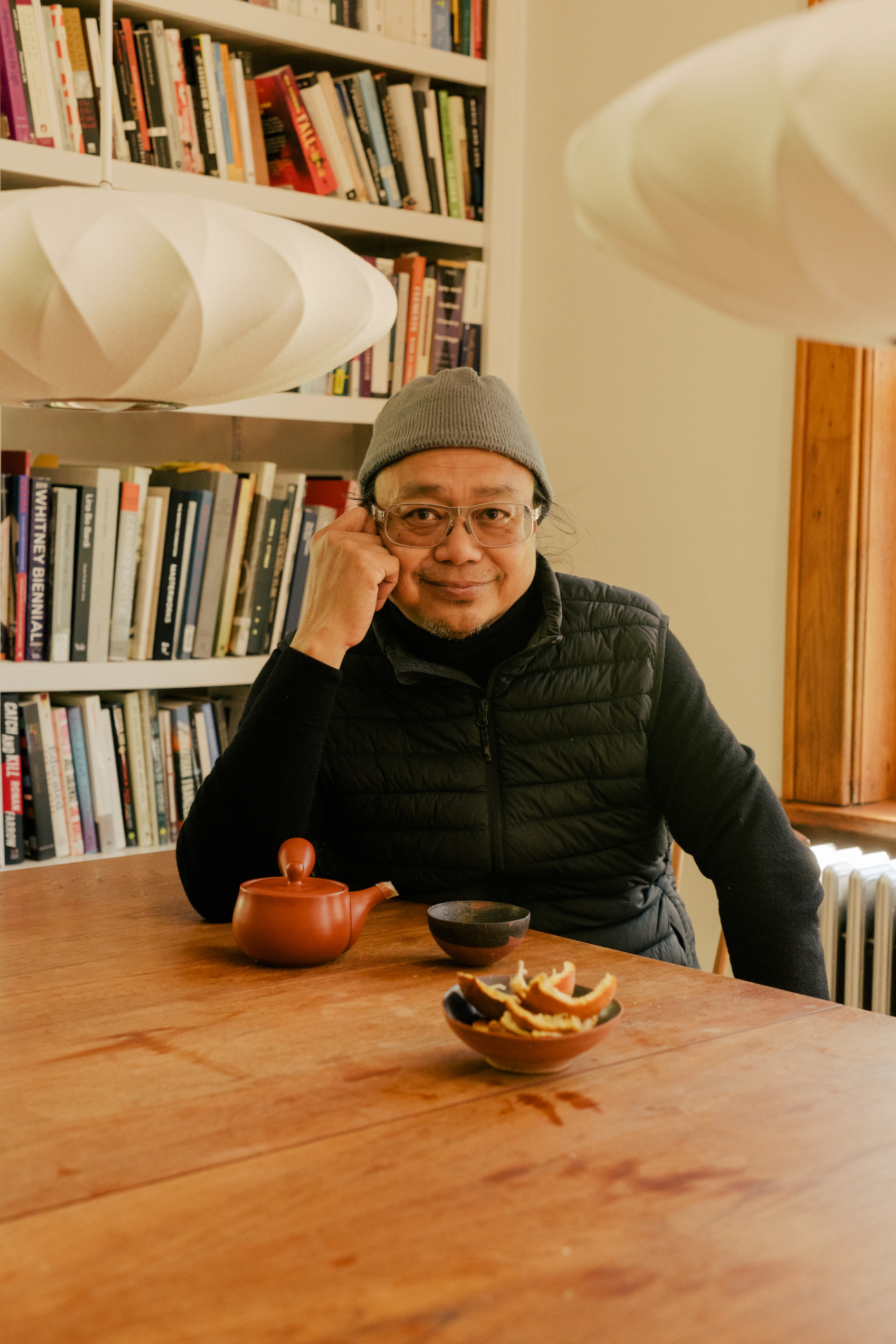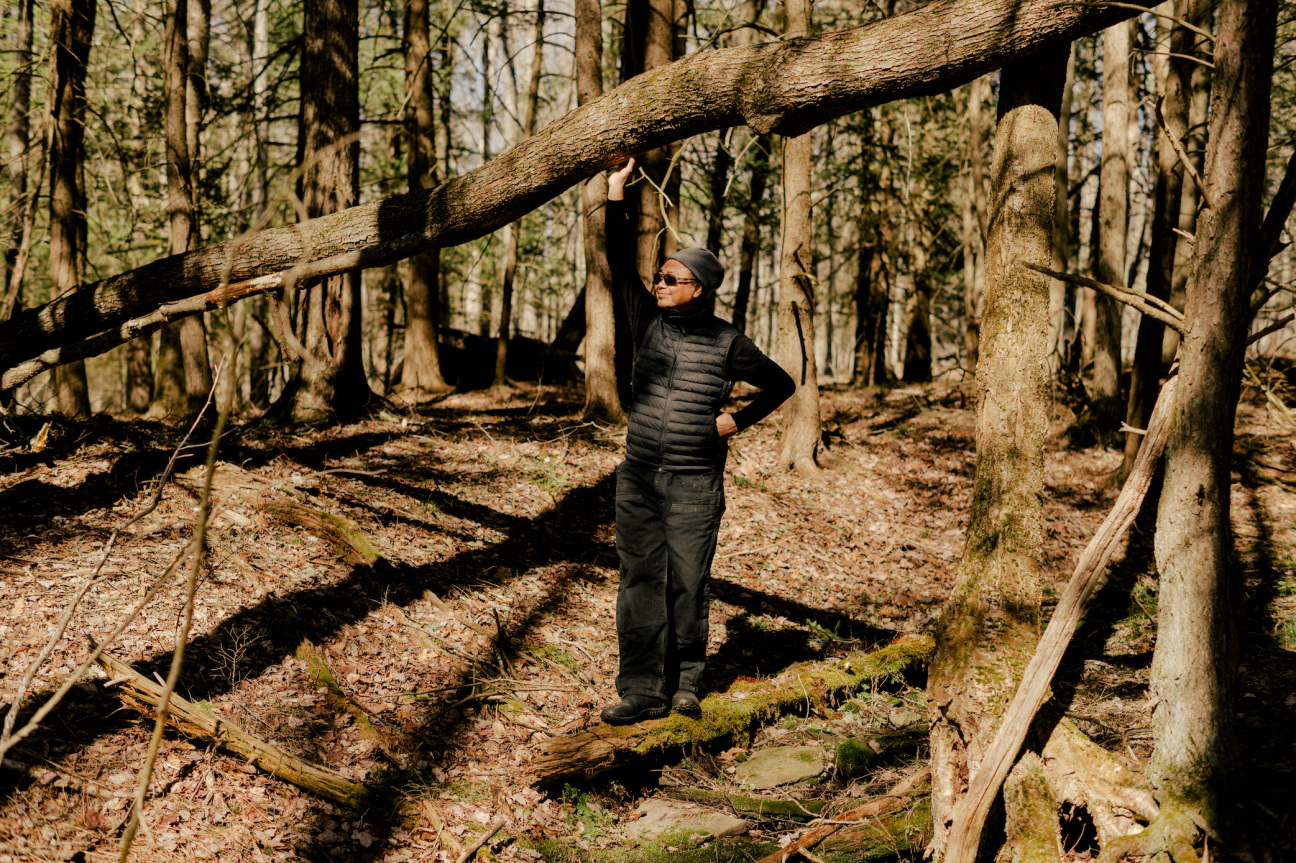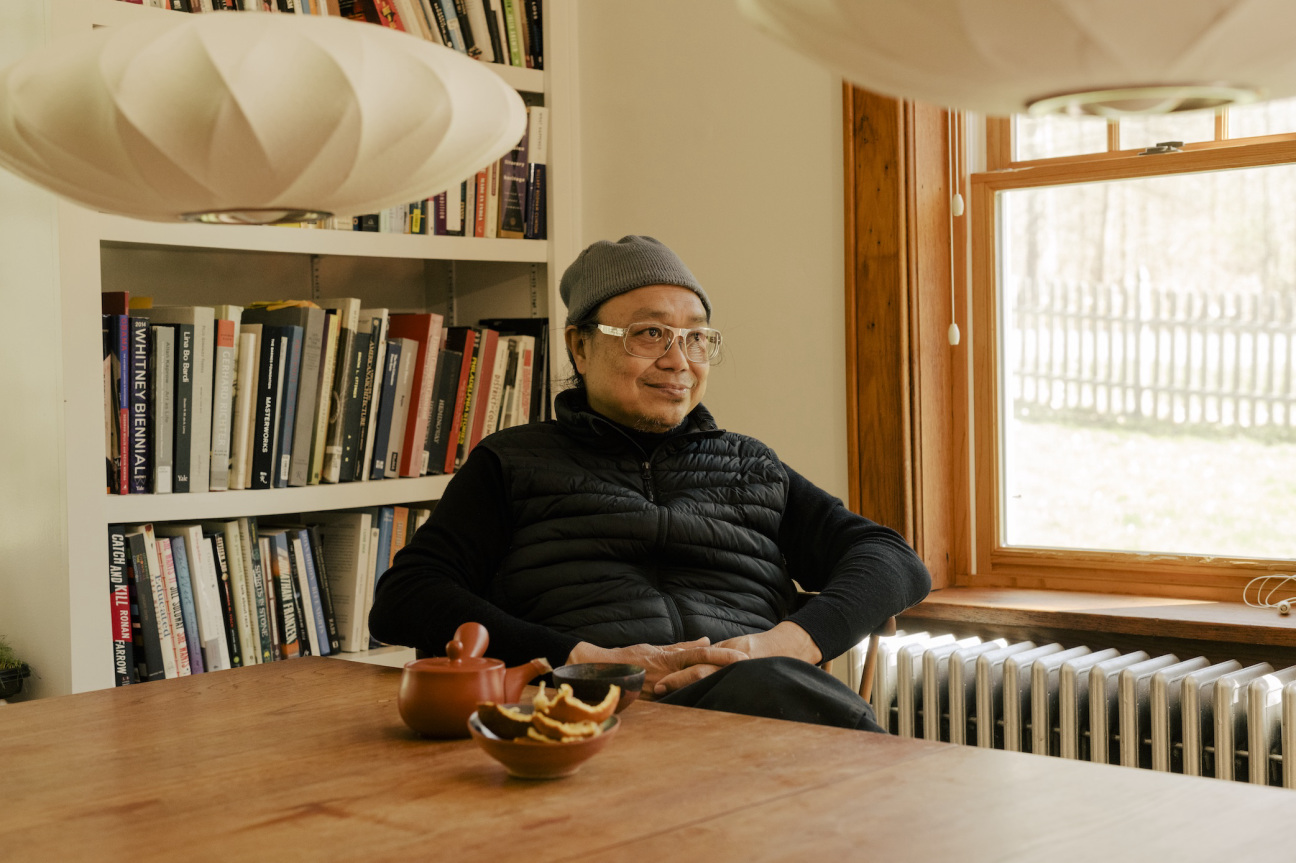
Digestion is never instantaneous. Its nature is process. It spans hours, sometimes centuries. For example, a meal of rice noodles dressed with tamarind sauce and peanut crumbs—served in February 1990 as one of artist Rirkrit Tiravanija’s early food works, untitled 1990 (pad thai)—was probably extruded through the intestines of participating New Yorkers overnight.
But the radicality of the gesture remains deep in the guts of the art world, pervading our cultural biome and the way we see ourselves as artists and viewers. It is into these roiling bowels that curators Ruba Katrib and Yasmil Raymond dared to venture, bringing us “A LOT OF PEOPLE.” The MoMA PS1 show, opening tomorrow, will be the inaugural U.S. survey of an artist who, for four decades, has actively worked against the shelf life of facts, objects, and identity by destabilizing (and simultaneously elucidating) the fungible borders between author and audience, material and idea, biography and lived experience.
When Marcel Duchamp asserted, in 1917, that a bicycle wheel or a toilet turned on its head was as much an artwork as a painstakingly crafted painting, he revolutionized art with the readymade and what theorist Thierry de Duve describes as “an attitude.” Decades later, mashing up the open-endedness of John Cage’s performances and the incisiveness of Michael Asher’s institutional interventions, Tiravanija converted attitude into action.
In fact, countless people pissed in Tiravanija’s untitled 1996 (tomorrow is another day), a plywood replica of his East Village apartment installed at the Kölnischer Kunstverein in Cologne. Visitors also napped, bathed, and made out. My house is your house. And what we do in it is art. The host didn’t even have to be there to say so.

It is this snout-to-tail embrace of the everyday that has made the Thai artist a canonical figure and an archival nightmare. Tiravanija’s artworks are often like recipes—so open to substitutions and the chef’s whims that they almost always scrape up against the Ship of Theseus paradox. When the work isn’t pillaging the world’s pantries, travel itineraries, and architecture, it tends to cannibalize itself. Take, for example, Tiravanija’s untitled 2017 (super 8), a piece composed of his earlier Super 8 films.
Out of this tangle of dates and materials, Raymond and Katrib have wrestled the artist’s output into coherent form. They had a running start thanks to archivists Jörn Schafaff and Jan Pfeiffer, who, in the late 2000s, created a five-way categorization in their quest to organize a pile of work 20 years in the making. Each of these typologies—slogans, replicas, immersive installations, portraits, and stages—appears in the PS1 show. But the curators further distilled the practice into what Katrib calls “two, really two and a half, methodologies.”
One of these concerns the part of Tiravanija’s practice that might loosely be called object-focused, including the aforementioned slogans, portraits, and replicas. The second methodology unfolds as a literal stage, where a series of participatory performances will take place. As for the half-methodology: This is untitled 2011 (558 broome st. the future is chrome), the exhibition’s welcome mat, an immersive replica of the original Gavin Brown’s Enterprise, sans the beer. Instead there are ceramic bottles glazed with palladium luster—a sober, one-for-one replacement therapy that the artist has grown to favor.

Most people familiar with Tiravanija tend to think of him as a relational aesthete and social practitioner, a teacher with a backpack of tricks and treats swinging between responsibilities and studios in New York, Berlin, and Chiang Mai. This exhibition doesn’t refute the wanderlust thread nor the patrimony of his students (he’s a longtime faculty member at Columbia University’s School of Visual Arts). It does add an interpretation that has been missing: Tiravanija the autobiographer, an immigrant and son of a Thai diplomat trying to make sense of his own narrative as both insider and outsider in a rapidly globalizing world.
Perhaps its absence up until now can be accounted for in its prescience. Tiravanija’s diaristic yet flexible forms foreshadow the last decade’s fixation with gluing identity politics onto a slippery mass of exceptions—its failure to account for those individuals shuttling between worlds, as well as work that exploits those cracks in order to make new (w)holes. “I think that Rirkrit’s consistency will be what comes across most,” says Katrib of the exhibition. “The work is ultimately very personal.”
Tiravanija echoes this sentiment when I write to him about the upcoming survey. “It has been difficult,” he says. “I don’t think of my work in one context, in one place. The work has always been as much about the people and the place where and when it was made. But the work has directions; it has a spine of awareness and attentions. Perhaps in the end it’s all biographical, without the ego of one.”
"A LOT OF PEOPLE" will be on view from October 12, 2023 to March 4, 2024 at MoMA PS1 in New York. "NO MORE REALITY," the artist's exhibition at 1301 PE, is running concurrently in Los Angeles through October 28, 2023.










 in your life?
in your life?

